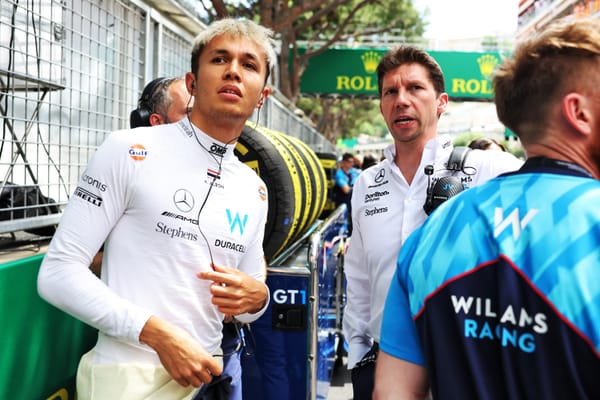How The Return Of The Chinese GP Could Transform F1’s Global Landscape
The roar of the engines once again resonated through the Shanghai International Circuit in 2024 to celebrate the highly awaited return to the Formula 1 calendar of the Chinese Grand Prix. The five-year hiatus the event experienced, primarily due to the COVID-19 pandemic, was the last time the circuit was heard. The return means more than the mere reopening of racing; it means a realignment of the global ambition of F1. The Chinese market, with an expanding fan base and tremendous economic potential, plays a crucial role in the expansion of F1. This return is more than an event; it’s an impetus to create transformative change that will redefine the cultural, economic, and competitive dynamics of F1.
Historical Significance: Creating the Basis
The thunderous entry was made by the Chinese Grand Prix back in 2004, a milestone that showed F1’s entry into the Asian market. The Shanghai International Circuit, the work of Hermann Tilke, soon became an annual fixture on the calendar, renowned for having fast corners, long straights, and an unpredictable climate. The circuit witnessed some of the sport’s best moments take place, securing a place in the annals of F1 history.
Memorable moments and early life
Rubens Barrichello was the winner of the inaugural 2004 race, providing a successful beginning to the market entry for Ferrari. The track has witnessed some memorable moments over the years, like Michael Schumacher’s emotional last victory in 2006 and Lewis Hamilton’s dominating displays that made him the top-performing driver at the Shanghai International Circuit. The events did not only deliver speed but also added to the growing interest in F1 among the Chinese fan base.
Challenges and Adaptations
Despite the initial success, the Chinese Grand Prix saw its fair share of challenges. The logistical issues, cultural challenges, and the need to adapt to the prevailing market dynamics presented formidable challenges to F1 and partners. The organizers worked hard to tackle the challenges, implementing measures to include the locals, improving the infrastructural facilities, and developing a better fan experience.
The Strategic Importance of China: Beyond the Color Line
The hosting of the Chinese Grand Prix reaffirms the strategic importance of China to the global strategy of F1. China is not merely a hosting country but an untapped large market full of growth potential. With a population exceeding 1.4 billion and a rapidly growing middle class, China offers unprecedented opportunities for F1 to expand its fanbase, earn more revenue, and strengthen its global brand.
Economic Powerhouse
China’s recent rise to prominence economically has been anything if not spectacular. The second-largest player in the global economy, China boasts a consumer market that is growing strong and an escalating demand for luxury brands and entertainment. F1, renowned for its innovative tech and speed drama, is perfectly positioned to capitalize on the movement. The Chinese Grand Prix attracts investment, stimulates domestic tourism, and provides international brands the means to link with the consumer market within China.
Cultural Bridge:
Besides the economic significance, the Chinese Grand Prix also serves the role of a cultural bridge between the West and the East. It provides a platform where cultural exchange, understanding, and appreciation are facilitated. The best that F1 has to offer through the form of technology and racing comes together along with some aspects of the culture of China to create an innovative and interactive experience for the international fans.
Fan Phenomenon: The Rise of a New Generation of Motorsport Enthusiasts
One of the most significant outcomes of the Chinese Grand Prix has been the exponential growth of the fan base of F1 in China. The sport has added millions of new followers through the years, particularly from the younger age group. The surge has partly been triggered by the increased availability of F1 through digital means, coupled with the rise of home heroes such as Zhou Guanyu, who have inspired the next generation of racing enthusiasts.
Demographic Growth: Exponential Growth
China’s F1 fanbase has gone from a fringe group to a mass movement. With an estimated 150-plus million followers, China ranks among the sport’s largest and most dedicated F1 markets in the world. The growth has been fueled by a broad spectrum of causes that include the sport’s growing popularity overall, the availability of F1 via digital channels, and the emergence of Chinese drivers within the sport.
The “Zhou Guanyu Effect
The rise to fame of Zhou Guanyu has made an unprecedented contribution to the popularity of the sport within China. Zhou has made his F1 racing debut in 2022 but has already become a national idol, inspiring a whole new generation of young Chinese to be interested in the sport. His presence on the track has raised viewership but has also generated an added identification and connection factor amongst the Chinese viewers.
Strategic Partnerships: Powering Growth and Innovation The hosting of the Chinese Grand Prix has also induced a boom of strategic partnerships between F1 and Chinese enterprises. The partnerships are not only providing the much-needed finance but are also igniting innovation and tech development within the sport.
Main Partnerships
F1 has forged strategic alliances with the best Chinese companies from various sectors like tech, automotive, and finance. The alliances bring to F1 valuable resources, expertise, and market intelligence that drive the sport’s growth and innovation. The Chinese companies benefit from the global exposure and reputation that come with being part of F1.
Technological innovation
China is rapidly emerging as a global tech leader in the areas of electric cars, artificial intelligence, and data analysis. F1 is keen to capitalize on this expertise, pursuing potential alliances with Chinese tech companies to develop innovative solutions to improve the performance of the cars, the fan experience, and sustainability.
The future of Formula 1 racing in China: a lasting commitment
The renewal of the five-year contract of the Chinese Grand Prix until 2030 reaffirms F1’s commitment to the Chinese market. This will likely stimulate further investment, drive innovation, and solidify China’s position as a vital stakeholder within the global F1 ecosystem.
Growing Beyond Shanghai
While the Shanghai International Circuit has been an unqualified success hosting the Chinese Grand Prix, there are options to expand the role of F1 in China beyond Shanghai. There are options to look to other big cities, such as Beijing or Guangzhou, to further expand the sport’s popularity and exposure.
The Emergence of Motorsport in China
Motorsport The growth of F1 in China is also contributing to the expansion of Chinese motorsport overall. With more investment in racing circuits, driver training initiatives, and spectator participation programs, China will be a force to be considered globally within the sport soon. Challenges and Opportunities: The Path Ahead While the future of F1 in China appears bright, there are challenges to be overcome. Navigating complex regulatory structures, managing cultural sensitivities within the region, and addressing issues surrounding sustainability are some of the challenges that F1 must address to ensure that it will be successful in the long term within China. Sustainability and Corporate Responsibility As concern about climate change and social injustice grows, F1 comes under increasing pressure to demonstrate that it is socially responsible and sustainable. This means conducting business through partners that are local to encourage sustainable behavior, reducing the carbon footprint of the race, and contributing to the development of the community. Regulatory
Considerations
Doing business within China involves coping with an intricate system of regulations and politics. F1 has to work hand in hand with government leaders and the local authorities to fully comply with the laws and regulations that are applicable. Good relationships have to be built with the key stakeholders to ensure the sustainability of the Chinese Grand Prix.
Conclusion: The Transformative Influence
The return of the Chinese Grand Prix is more than simply a return to racing; it’s an impetus for transformative evolution within the global landscape of F1. With the welcome back to the market, F1 is not only expanding the fan base and bringing in additional revenue but also encouraging cultural interchange, innovation, and sustainability.
As F1 continues to expand, the Chinese Grand Prix will be an influential force to mold the future of the sport. The race is evidence that F1 has the ability to innovate, evolve, and appeal to new followers, solidifying the sport’s place as the best motorsport championship in the world. The ride through China has only just started, and the road to the future will be filled with excitement, challenges, and unprecedented opportunities to expand.






















